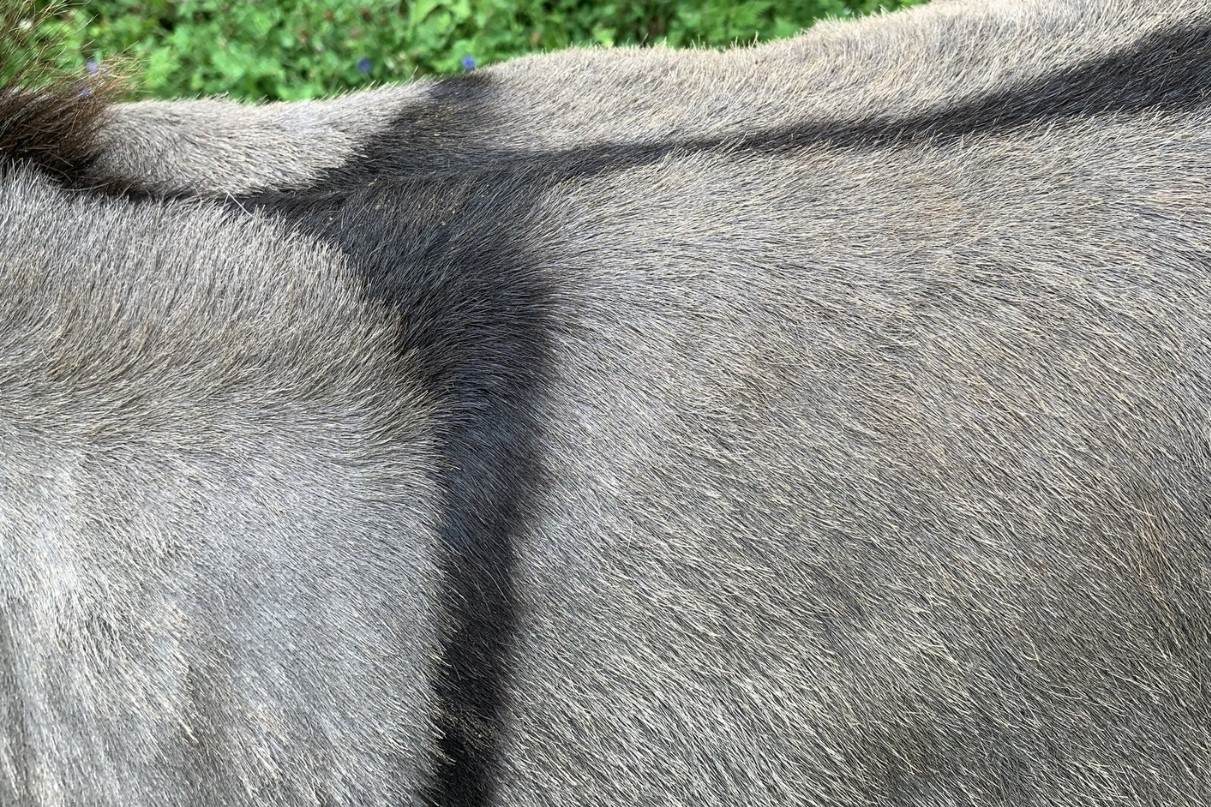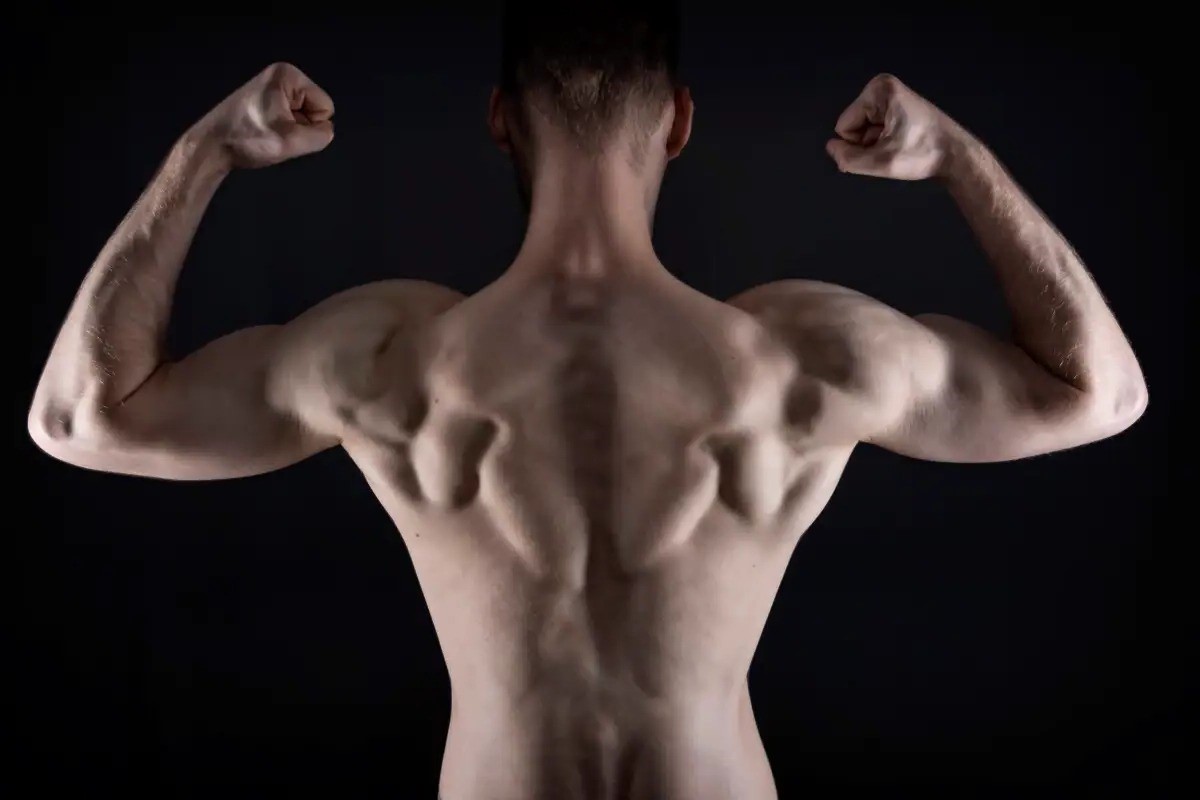Home>Health and Wellness>The Surprising Reason You Feel Pain In Your Upper Back When You Breathe


Health and Wellness
The Surprising Reason You Feel Pain In Your Upper Back When You Breathe
Published: January 19, 2024
Discover the connection between breathing and upper back pain. Learn how to improve your health and wellness with expert tips.
(Many of the links in this article redirect to a specific reviewed product. Your purchase of these products through affiliate links helps to generate commission for Noodls.com, at no extra cost. Learn more)
Table of Contents
Introduction
Do you ever experience a sharp, stabbing pain in your upper back when you take a deep breath? It can be a surprising and unsettling sensation, leaving you wondering what could be causing it. The truth is, there's a fascinating connection between your breathing and the discomfort you feel in your upper back. Understanding this connection can shed light on the potential reasons behind this discomfort and offer insights into how to address it effectively.
When it comes to your body's intricate workings, every sensation has a story to tell. The pain in your upper back when you breathe deeply is no exception. It's a signal from your body, a message that something may be amiss and in need of attention. By delving into the anatomy of the upper back and exploring the role of breathing, we can uncover the underlying reasons for this discomfort and discover practical strategies to alleviate it.
So, let's embark on a journey through the fascinating interplay of your body's mechanics and the intriguing relationship between your breathing and the discomfort in your upper back. By the end of this exploration, you'll have a deeper understanding of the surprising reasons behind this sensation and gain valuable insights into how to find relief.
The Anatomy of the Upper Back
The upper back, also known as the thoracic spine, is a complex structure comprised of 12 vertebrae, each connected to a rib on either side. This region of the spine plays a crucial role in providing stability, support, and protection for vital organs, such as the heart and lungs. The thoracic spine extends from the base of the neck to the bottom of the rib cage, serving as a bridge between the cervical spine in the neck and the lumbar spine in the lower back.
The vertebrae in the upper back are uniquely designed to facilitate a range of movements while maintaining stability. Unlike the cervical spine, which allows for a wide range of motion, the thoracic spine is more limited in its mobility due to the presence of rib attachments. This limitation is essential for providing structural support to the body and protecting the delicate organs housed within the thoracic cavity.
In addition to the vertebrae and ribs, the upper back is home to a network of muscles, tendons, ligaments, and connective tissues that work in harmony to support posture, facilitate movement, and protect the spinal column. The intricate interplay of these components enables the upper back to bear the weight of the body, withstand external forces, and contribute to overall stability and mobility.
Furthermore, the upper back serves as an anchor for the muscles involved in respiration, including the diaphragm and intercostal muscles. These respiratory muscles play a vital role in the breathing process, expanding and contracting to facilitate the inhalation and exhalation of air. The coordinated action of these muscles is essential for maintaining optimal lung function and sustaining the body's vital processes.
Understanding the intricate anatomy of the upper back provides valuable insights into the interconnectedness of its components and their roles in supporting bodily functions. This knowledge forms the foundation for comprehending the potential sources of discomfort and dysfunction that may manifest in this region, particularly when related to breathing patterns and respiratory mechanics.
The Role of Breathing
Breathing is a fundamental physiological process that sustains life, providing the body with a constant supply of oxygen while expelling carbon dioxide, a byproduct of cellular metabolism. While the act of breathing may seem automatic and effortless, it involves a complex interplay of anatomical structures, neural signals, and muscular coordination.
At the core of the breathing process is the diaphragm, a dome-shaped muscle located at the base of the rib cage. When you inhale, the diaphragm contracts and moves downward, creating a vacuum within the chest cavity. This action expands the lungs, allowing air to rush in and fill the space. As you exhale, the diaphragm relaxes and moves upward, compressing the lungs and expelling air.
In addition to the diaphragm, the intercostal muscles between the ribs play a crucial role in breathing. These muscles assist in expanding and contracting the chest cavity, further facilitating the inhalation and exhalation of air. The coordinated action of the diaphragm and intercostal muscles ensures efficient and rhythmic breathing, supporting the body's oxygenation and carbon dioxide removal processes.
Beyond its role in gas exchange, breathing influences various physiological functions, including heart rate, blood pressure, and overall relaxation. Deep, diaphragmatic breathing has been linked to a reduction in stress and anxiety, promoting a sense of calm and well-being. Moreover, mindful breathing techniques are employed in practices such as yoga and meditation to enhance mental clarity and emotional balance.
The respiratory system's close relationship with the cardiovascular system underscores the interconnectedness of breathing and overall health. Optimal breathing patterns contribute to efficient oxygen delivery to the body's tissues, supporting cellular function and energy production. Conversely, shallow or irregular breathing can disrupt this delicate balance, potentially leading to diminished physical and mental vitality.
Understanding the intricate role of breathing provides a foundation for recognizing its impact on various aspects of health and well-being. The interconnected nature of respiratory mechanics and bodily functions underscores the significance of maintaining optimal breathing patterns for overall vitality and vitality. This insight sets the stage for exploring the potential links between breathing and the discomfort experienced in the upper back, offering valuable insights into addressing this phenomenon effectively.
The Connection Between Breathing and Upper Back Pain
The intricate relationship between breathing and upper back pain stems from the interplay of anatomical structures and muscular coordination involved in the breathing process. When you take a deep breath, the expansion of the chest cavity and the downward movement of the diaphragm can exert pressure on the surrounding structures in the upper back. This pressure may exacerbate existing tension or discomfort, leading to a sensation of pain or tightness in the upper back region.
Furthermore, irregular breathing patterns, such as shallow breathing or breath-holding, can contribute to muscular imbalances and strain in the upper back. When the respiratory muscles, including the intercostal muscles and the diaphragm, are not fully engaged or coordinated during breathing, the surrounding musculature in the upper back may compensate, leading to overuse and potential discomfort.
Additionally, individuals who experience chronic stress or anxiety may exhibit heightened muscle tension, particularly in the upper back and shoulder regions. This muscular tension can be further exacerbated during breathing, as the body's natural response to stress often involves shallow breathing and increased muscular rigidity. The combination of heightened stress levels and altered breathing patterns can contribute to the manifestation of upper back pain during breathing.
Moreover, underlying musculoskeletal conditions, such as thoracic spine misalignments, rib joint dysfunction, or muscular trigger points, can also contribute to upper back pain when breathing. These structural irregularities can be exacerbated by the mechanical forces exerted during the breathing process, leading to localized discomfort and restricted movement.
The connection between breathing and upper back pain underscores the importance of recognizing the impact of respiratory mechanics on musculoskeletal health. By understanding this relationship, individuals can explore holistic approaches to address upper back discomfort, including targeted breathing exercises, postural awareness, and muscular relaxation techniques. Moreover, cultivating mindful breathing practices and promoting overall respiratory health can contribute to alleviating upper back discomfort and fostering a greater sense of physical well-being.
Understanding the intricate connection between breathing and upper back pain provides valuable insights into the potential sources of discomfort in this region. By acknowledging the influence of breathing patterns and muscular coordination, individuals can embark on a journey toward addressing and mitigating upper back pain, thereby promoting enhanced comfort and mobility in their daily lives.
Conditions That Can Cause Upper Back Pain When Breathing
Several underlying conditions can contribute to the experience of upper back pain when breathing, each stemming from distinct physiological mechanisms and musculoskeletal factors. Understanding these conditions is essential for identifying potential sources of discomfort and implementing targeted strategies for relief.
-
Muscular Strain and Tension: Prolonged periods of poor posture, repetitive movements, or excessive physical exertion can lead to muscular strain and tension in the upper back. When these muscles are already under duress, the added pressure from deep breathing can exacerbate discomfort, resulting in a sensation of pain. Additionally, individuals who engage in activities that involve heavy lifting or repetitive overhead movements may experience muscular overuse, further contributing to upper back pain during breathing.
-
Thoracic Spine Misalignments: Misalignments or suboptimal positioning of the vertebrae in the thoracic spine can give rise to localized discomfort, particularly when coupled with deep breathing. These misalignments may stem from poor posture, spinal degeneration, or traumatic injuries. When the structural integrity of the thoracic spine is compromised, the mechanical forces exerted during breathing can exacerbate misalignments, leading to discomfort and restricted movement.
-
Costovertebral Joint Dysfunction: The costovertebral joints, which connect the ribs to the thoracic vertebrae, play a pivotal role in facilitating rib movement during breathing. Dysfunction or irritation of these joints can result in localized pain in the upper back, particularly during deep inhalation. Inflammation, arthritis, or repetitive strain on these joints can contribute to discomfort, impacting the breathing process and potentially leading to heightened pain sensations.
-
Intercostal Muscle Strain: The intercostal muscles, situated between the ribs, are integral to the expansion and contraction of the chest cavity during breathing. When these muscles are strained or overexerted, such as during vigorous physical activity or sudden movements, the act of breathing deeply can exacerbate the discomfort, resulting in a sharp or achy sensation in the upper back. Additionally, individuals who engage in activities that involve repetitive twisting or bending motions may be susceptible to intercostal muscle strain.
-
Muscular Trigger Points: Trigger points, or localized areas of muscle tension and hypersensitivity, can develop in the upper back due to various factors, including poor ergonomics, chronic stress, or overuse. When these trigger points are stimulated during deep breathing, they can elicit referred pain in the surrounding areas, contributing to discomfort in the upper back. Addressing these trigger points through targeted therapies and muscular release techniques can be instrumental in alleviating associated pain during breathing.
By recognizing the potential conditions that can give rise to upper back pain when breathing, individuals can gain valuable insights into the underlying factors contributing to their discomfort. This awareness sets the stage for exploring tailored approaches to address these conditions effectively, promoting enhanced comfort and mobility in the upper back region.
Tips for Relieving Upper Back Pain When Breathing
-
Mindful Breathing Techniques: Engage in mindful breathing exercises to promote relaxation and alleviate muscular tension in the upper back. Practice diaphragmatic breathing, focusing on deep inhalations and slow exhalations to enhance respiratory coordination and reduce strain on the upper back muscles.
-
Postural Awareness: Maintain proper posture throughout the day, especially during activities that involve prolonged sitting or standing. Support the natural curvature of the spine and avoid slouching to minimize undue pressure on the upper back. Utilize ergonomic seating and posture-supporting aids to reinforce optimal spinal alignment.
-
Gentle Stretching: Incorporate gentle stretching exercises targeting the upper back and chest muscles to enhance flexibility and alleviate tightness. Perform movements that promote thoracic spine mobility, such as shoulder rolls, arm reaches, and doorway chest stretches, to counteract the effects of prolonged sitting and promote a more open and relaxed upper back.
-
Strengthening Exercises: Engage in targeted strengthening exercises to fortify the muscles supporting the upper back and improve overall posture. Focus on exercises that target the rhomboids, trapezius, and latissimus dorsi muscles to enhance stability and reduce the likelihood of muscular imbalances contributing to upper back discomfort during breathing.
-
Heat Therapy: Apply heat therapy, such as warm compresses or heating pads, to the upper back to promote muscle relaxation and alleviate tension. The application of gentle heat can help soothe discomfort and enhance circulation in the affected area, fostering a greater sense of comfort during breathing.
-
Massage and Myofascial Release: Consider seeking professional massage therapy or myofascial release techniques to address muscular tension and trigger points in the upper back. Targeted massage can promote muscular relaxation and alleviate localized discomfort, contributing to improved breathing comfort and overall well-being.
-
Breathing Awareness During Movement: Pay attention to your breathing patterns during movement and physical activities. Coordinate your breath with movements to optimize respiratory support and minimize unnecessary strain on the upper back. Mindful breathing during exercise and daily activities can help reduce the likelihood of exacerbating discomfort during breathing.
-
Consultation with a Healthcare Professional: If persistent upper back pain during breathing persists or intensifies, seek consultation with a healthcare professional, such as a physician, physical therapist, or chiropractor. A comprehensive evaluation can help identify underlying factors contributing to the discomfort and guide the implementation of targeted interventions for relief.
By integrating these tips into your daily routine and cultivating a holistic approach to upper back health, you can effectively address discomfort experienced during breathing, promoting enhanced comfort and mobility in the upper back region.
Conclusion
In conclusion, the experience of feeling pain in the upper back when breathing deeply unveils a fascinating interplay between respiratory mechanics, musculoskeletal dynamics, and overall well-being. This sensation, though surprising and discomforting, serves as a poignant indicator of the interconnectedness of the body's intricate systems and the significance of maintaining optimal health in both physical and physiological domains.
The journey through the anatomy of the upper back and the role of breathing has illuminated the intricate structures and mechanisms at play, underscoring the delicate balance required for harmonious bodily function. The revelation of the connection between breathing and upper back pain has shed light on the potential sources of discomfort, encompassing muscular tension, structural irregularities, and breathing patterns. By unraveling these underlying factors, individuals can embark on a path toward proactive self-care and targeted interventions to alleviate discomfort and foster greater well-being.
Moreover, the exploration of conditions that can give rise to upper back pain when breathing has provided valuable insights into the multifaceted nature of musculoskeletal health. From muscular strain and thoracic spine misalignments to costovertebral joint dysfunction and intercostal muscle strain, each condition underscores the intricate interplay of anatomical structures and physiological processes. By recognizing these potential contributors to discomfort, individuals can empower themselves with knowledge and explore tailored approaches to address these conditions effectively, promoting enhanced comfort and mobility in the upper back region.
The compilation of practical tips for relieving upper back pain during breathing offers a comprehensive guide for individuals seeking proactive strategies to enhance their well-being. From mindful breathing techniques and postural awareness to gentle stretching, strengthening exercises, and therapeutic interventions, these tips encompass a holistic approach to addressing discomfort and promoting muscular relaxation. By integrating these strategies into daily routines, individuals can cultivate a greater sense of bodily awareness and resilience, fostering a harmonious relationship between breathing and upper back health.
Ultimately, the journey through the surprising connection between breathing and upper back pain underscores the profound wisdom encoded within the body's signals and sensations. By embracing this wisdom and engaging in proactive self-care, individuals can embark on a transformative journey toward enhanced comfort, mobility, and vitality in their daily lives. The pursuit of holistic well-being encompasses not only the alleviation of discomfort but also the cultivation of a deeper understanding of the body's intricate language, paving the way for a harmonious union of physical and physiological vitality.














